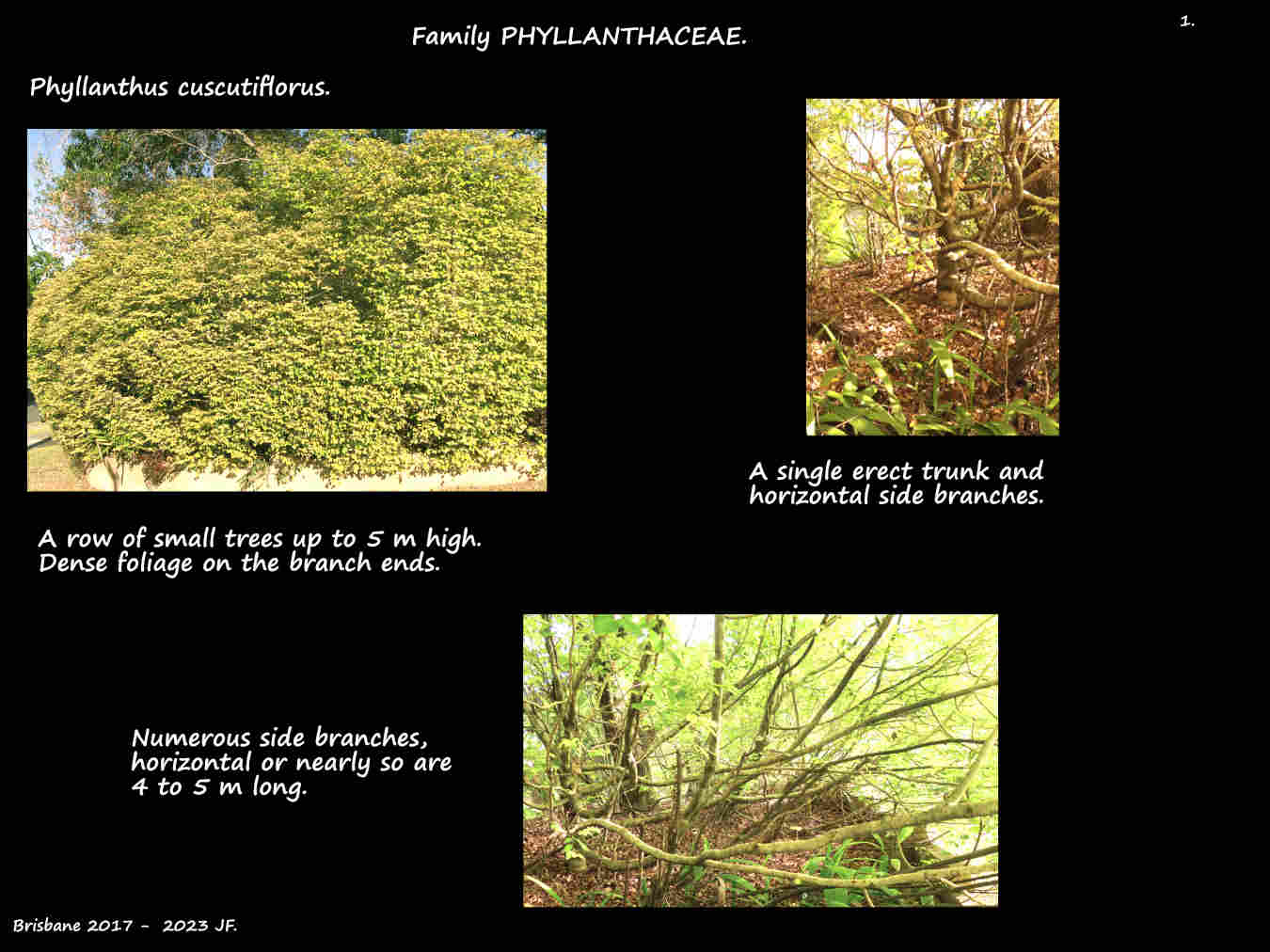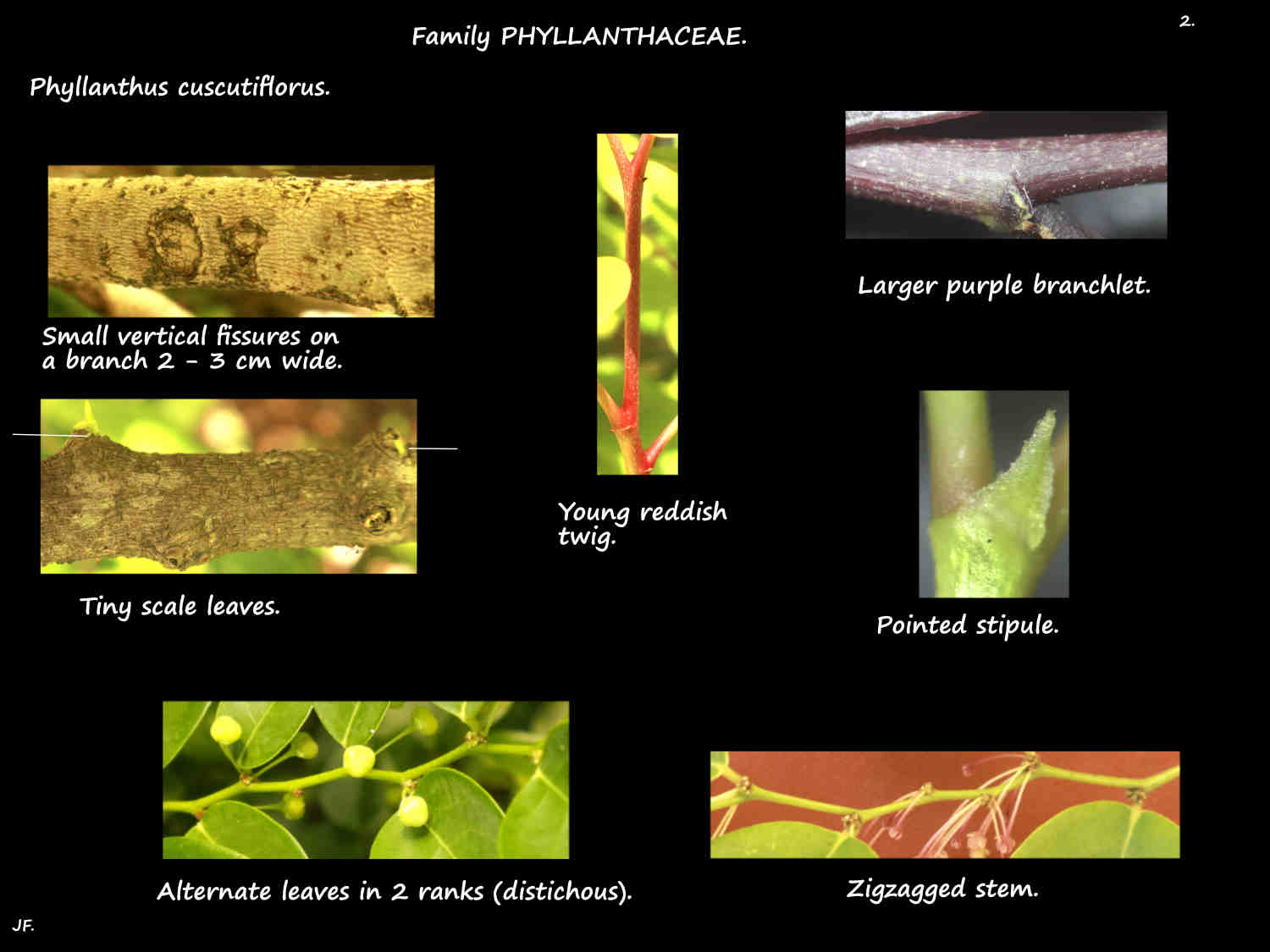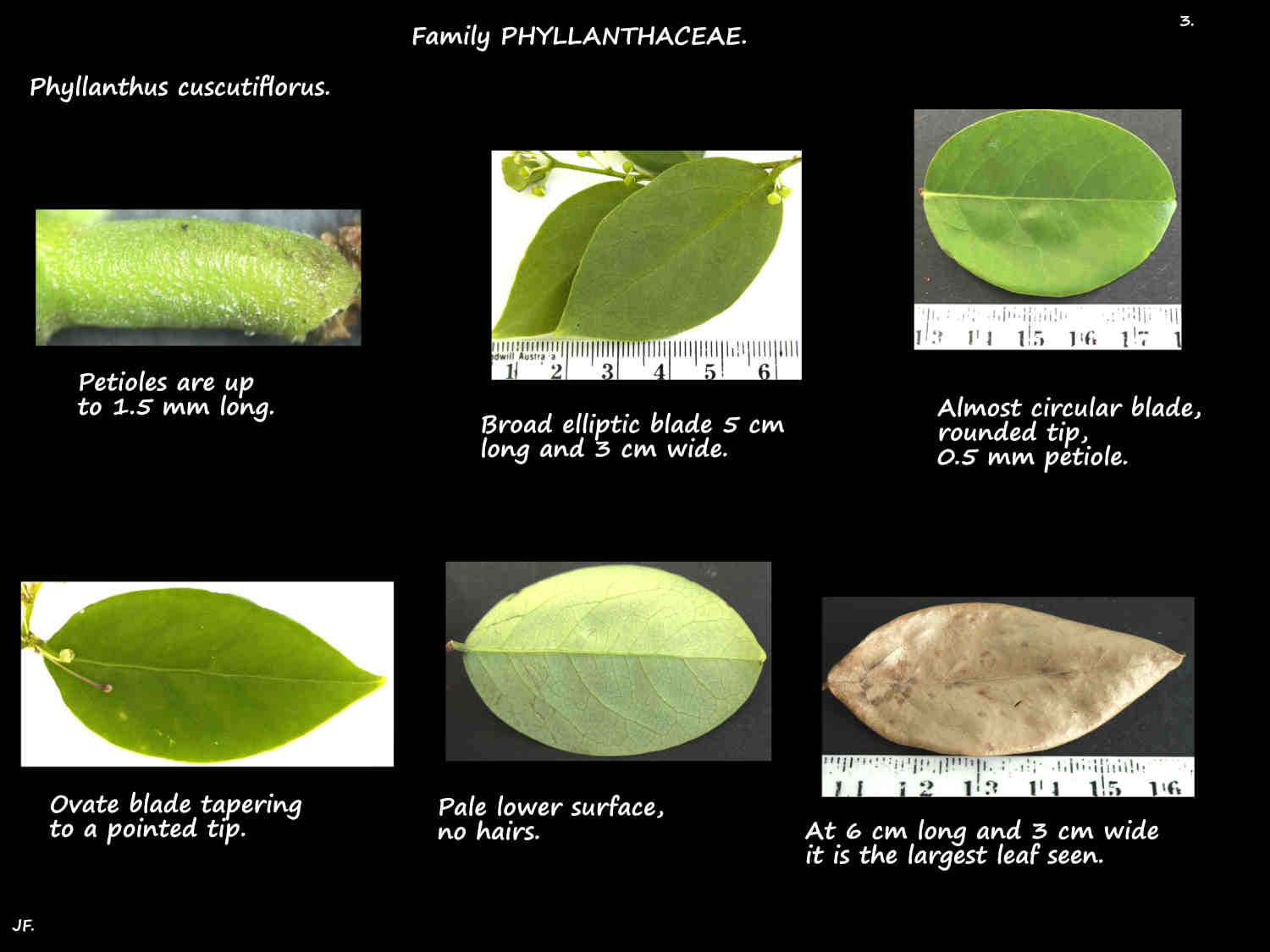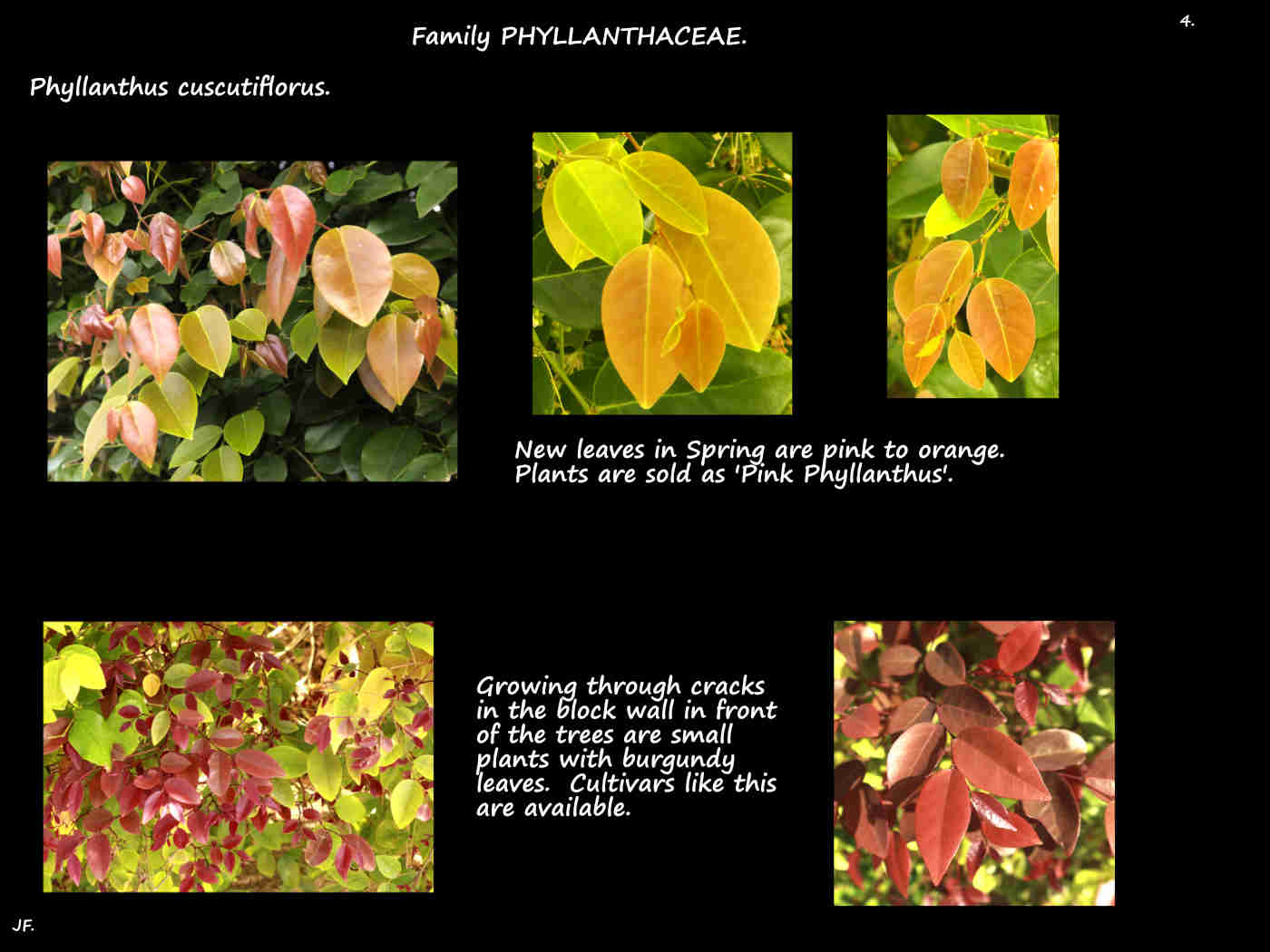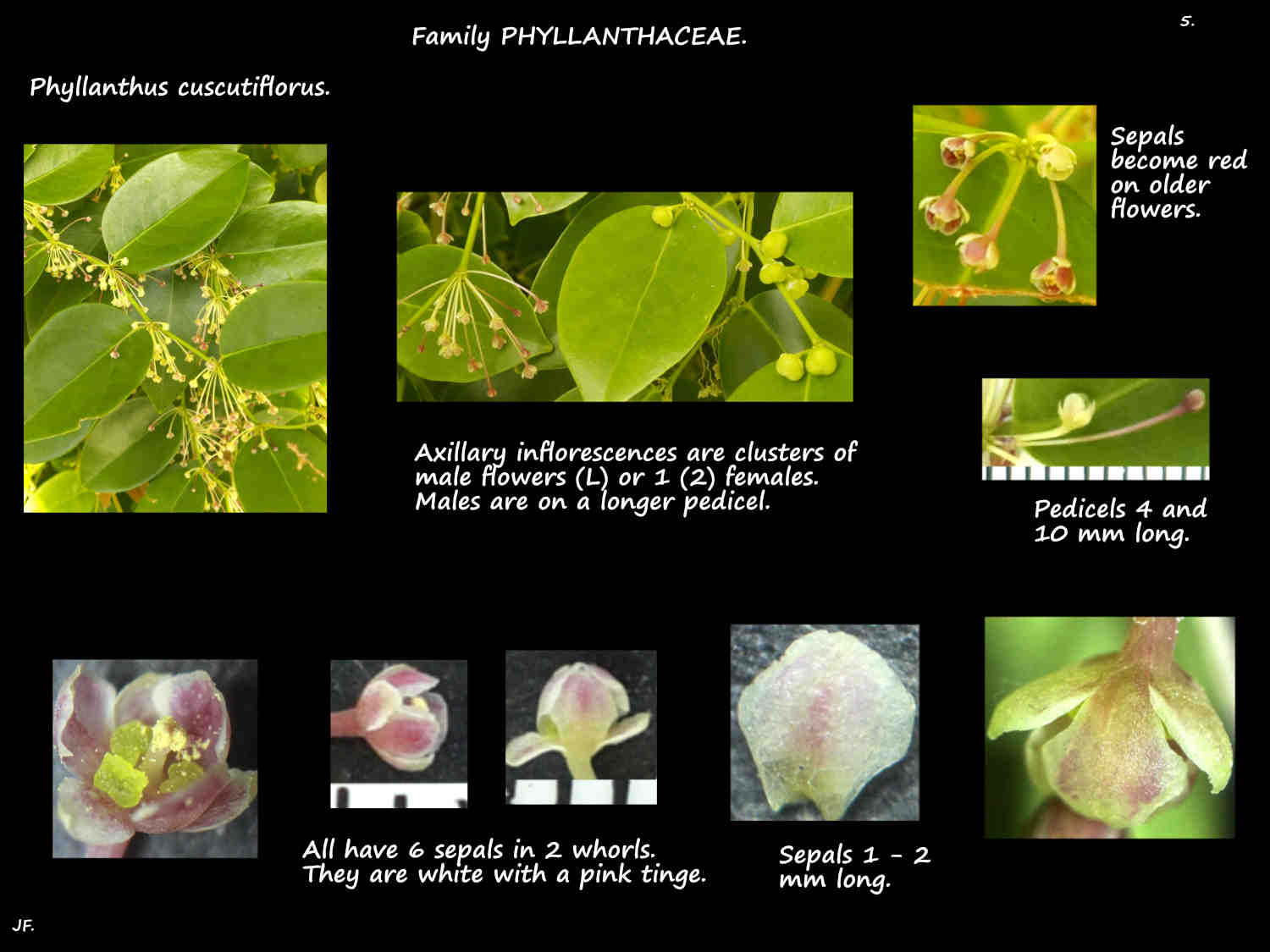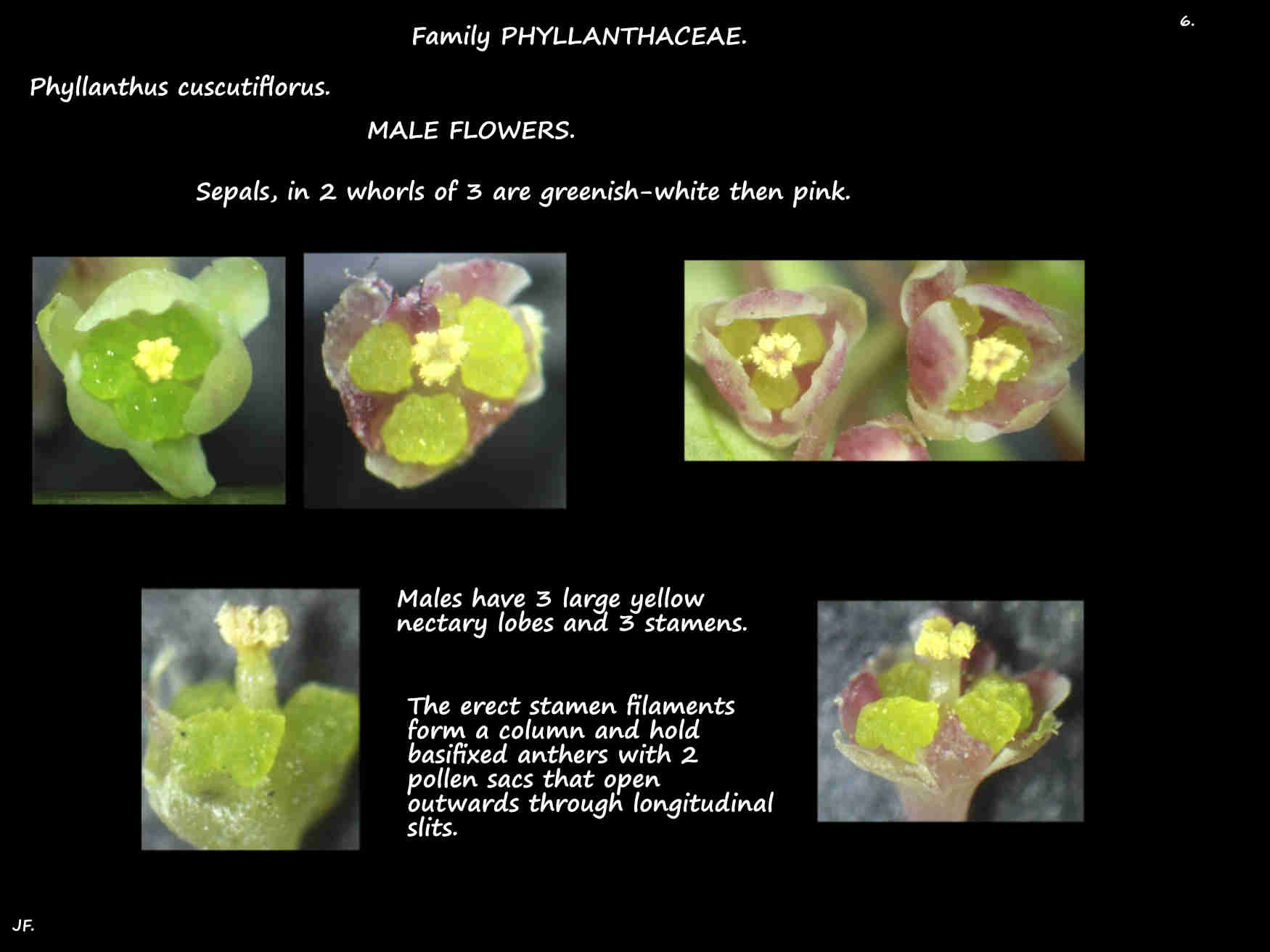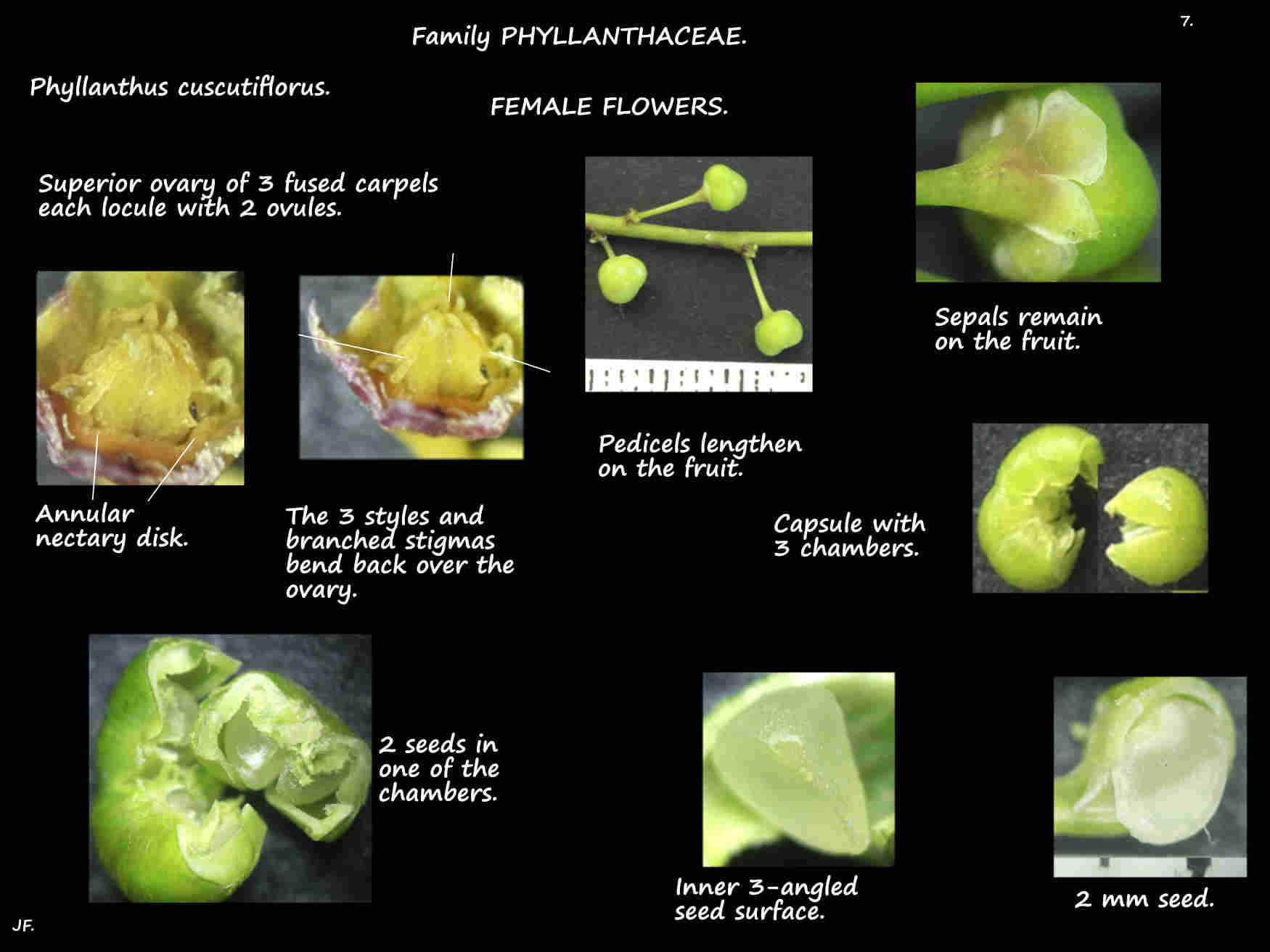Phyllanthus cuscutiflorus.
Pink phyllanthus is native to N. E. Queensland and New Guinea.
In cultivation they are a large shrub or small tree up to 5 or 6 m high.
In the wild they can be twice as tall and 5 m wide.
The smaller zigzagged reddish branches have no hairs.
The thick erect trunk has long lateral branches that can be horizontal or nearly so.
Plants are much branched with the smaller branches being erect to drooping.
The dense adult foliage leaves are alternately arranged in 2 ranks (distichous) so branches resemble a pinnate leaf.
Leaves are on a petiole up to 1.5 mm long with a small pointed stipule at the base.
Moore’s original description in 1905 says the blades are 4.5 to 13 cm long and 3 to 6 cm wide and these figures
are repeated in numerous later descriptions.
The other measurement less often seen is 1 to 5 cm long and this is more like those I have seen.
The ovate to wide elliptic or circular blades have a blunt or shallow pointed tip, a rounded base, smooth edges,
pinnate veins and the midrib is raised on both surfaces.
The lower surface is much paler and there are no hairs.
New leaves can be pinkish to orange or deep maroon or burgundy.
There are cultivars with these colours.
Flowers are unisexual with both male and female on all plants.
Axillary inflorescences have clusters of male flowers or 1 (2) female.
They are on slender pedicels up to 1 or 1.5 cm long with the males being longer than the females.
Flowers, around 2 mms across have 6 sepals in 2 whorls.
The sepals, around 2 mm long are white to pink.
Male flowers have 3 large nectary glands and 3 stamens.
The 3 erect filaments have bi-lobed anthers.
Female flowers have an annular nectary disk that may be lobed.
The smooth greenish superior ovary has 3 locules each with 2 ovules.
The 3 short styles have long bifid stigmas.
The slightly flattened spherical fruit are around 3 mm high and 4.5 mm wide.
They are 3-lobed and mature from green to red.
The persistent sepals also become a deeper red.
The 6, 2 mm long seeds are 3-angled on the inner surface and rounded on the outer.
J.F.

